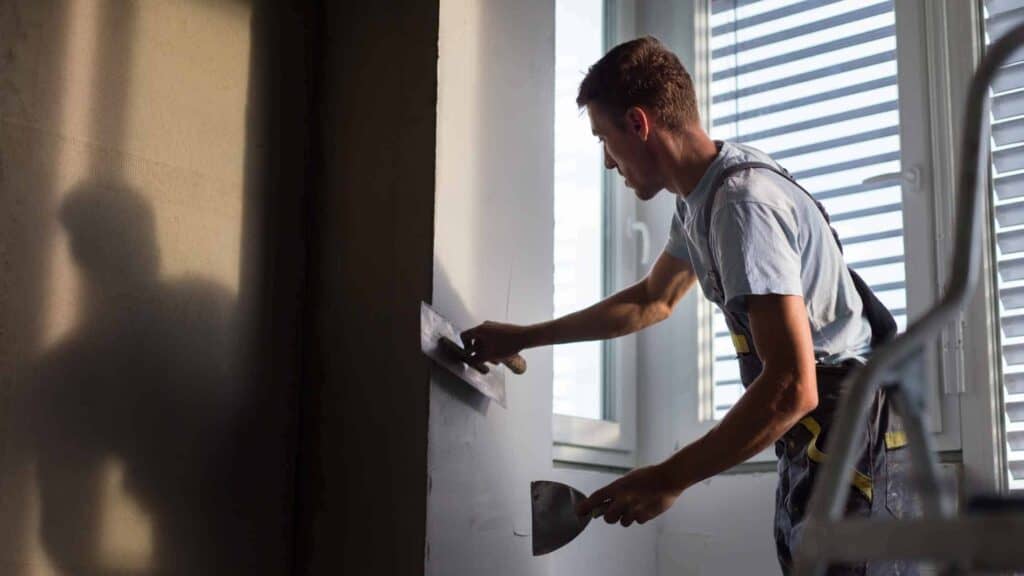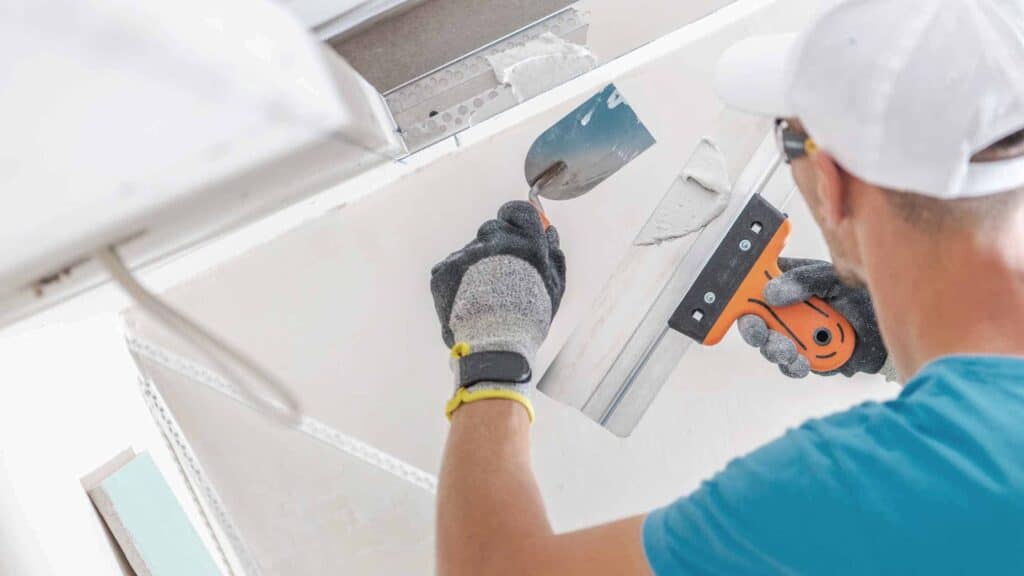In this article, we’ll explore everything you need to know about wall sealers, including their applications, pricing, and when to use them.
Wall sealer is a preparation product ideal for use on freshly plastered walls or uneven surfaces on walls. If you are doing a project, it is critical that you are well-versed in the features of the wall sealer.
Wall sealer is a vital component of any home renovation project, yet many homeowners are unsure of what it is and when to use it. Whether you’re embarking on a major renovation or just looking to update a single room, understanding the benefits of wall sealer can help you achieve a professional finish that will stand the test of time.
What Is Wall Sealer?
The wall sealer is a preparation solution with an acrylic liquid foundation ideal for use on freshly plastered or irregularly textured walls. Its main purpose is to smooth the wall’s surface and keep the brickwork from absorbing too much paint. The wall sealer saves paint by helping to standardize the painting process and reducing the need for many coats in the environment. It is also worth noting that the wall sealer does not act as a waterproofing agent; rather, it just helps to optimize the on-site painting.
Benefits Of Using Wall Sealers
When painting the interior walls, it is recommended that you first apply a sealant coat before applying the paint of your choice. So, why is the sealer coat such an important layer when painting interior walls?
1. Perfect Bonding Layer
Natural bonding chemicals are known to be present in the sealer coat. These bonding ingredients enable the sealer to adhere to the wall’s surface. Even if the wall is old or fresh, the sealer will adhere to it and form a tight bond. The paint will not peel off as easily as applied straight to the wall.
Certain paints will not adhere to the walls, particularly old ones. The oxygen in the air can deteriorate the rough surface of old walls. Yet, the sealer aids in forming the bond and prevents it from peeling off as it dries.
2. Paintable Wall Sealers For Drywall And Plaster
Another advantage of using the sealer is that it helps to maintain the paint’s original quality. When used on an ancient wall, some paints lose their original quality. When a wall is old, it becomes chalky and moist, and it may react with the paint. The paint contains chemicals that may react with the ancient wall’s substance. If the wall was previously painted, the paint, along with water, could be absorbed inside the wall. Without the sealer, the new paint may react with the wall as it is applied.
The chemicals in the new paint can react with the old wall, resulting in the formation of a new hue on the wall. After the paint dries, it may begin to crack and change color. This could be due to a reaction between the fresh paint and the old wall.
3. It Helps To Seal Off The Cracks And Holes In The Wall
Ordinary paint may not be able to cover and seal cracks in the walls. Yet, when sprayed before the paint, the sealer helps to cover these gaps and holes. As a result, it is recommended that the sealer be applied before painting the wall. When the cracks have been filled, the paint will appear and feel smooth when applied following the sealer.
When To Use Wall Sealer

The sealer should be used in various settings, although it is not appropriate for all types of walls. Certain walls require a sealant before painting. Alternatively, other walls may not require sealant before painting. So, when should you use the sealant on the walls?
1. If The Wall Has A Lot Of Stains
The sealer conceals the stain on the wall you wish to paint. You will now have a clean area to apply your favorite paint.
2. Wall Sealer For Cracks
If the wall is old and porous, or if it has any cracks, it must be covered before painting. The sealer helps to conceal any holes or cracks in the wall, providing you with a soft surface to paint over. Hence, if the wall is porous or has some cracks, you’ll need to seal it before you start painting.
3. If The Wall Has Flaked Off In Some Areas
If the wall has peeled off in certain sections, leaving it unleveled, the paint will adhere to the same surface. In the long run, the paint will appear to have some recessed regions, which may not be visually appealing. The sealer will assist in leveling the flaking-off spots and making the finished paint appear flat.
4. If The Wall Is Chalky
When you apply paint to most chalky walls, it becomes slick. Because of the powdery surface, the paint will not bond or attach to the wall. That is why some paint will peel off the wall as it dries. The sealer serves as a barrier between the paint and the wall.
Thus, with the chalky surface, the sealer will create a sticky surface that you may subsequently paint. When the paint is applied, it will not peel away, even after it has dried.
5. If You Need To Paint A Dark Colored Wall Paint
If the wall you want to paint has a dark hue, the best solution is to apply the sealer, which will produce a surface on which to apply the fresh wall paint. This also helps in long-term financial savings. A sealer is typically less expensive than normal paint.
Instead of putting more paint on to cover the dark paint on the wall, use the sealer to cover it. The sealer is also thick enough to only need one layer before applying the standard paint. If you used normal paint in the dark tone, you might need nearly four coats to completely cover the color. This could be quite expensive.
When Not To Use Wall Sealant
Although wall sealer is a multipurpose product, it should not be used on walls that have already been painted or have not been prepped. In renovations with previously painted walls, the entire surface must be sanded until it regains its plaster condition.
Differences Between Wall Sealer vs Primer
Contrary to popular belief, wall sealant and primer are different. The wall sealer, as previously stated, is a preliminary product intended for use on freshly plastered or irregularly textured walls, standardizing and optimizing on-site painting.
The preparation primer is required while repainting, especially when the walls are disintegrating or there is paint with lime or plaster present. In general, primer is viewed as a glue that aids in the bonding of wall or plaster particles so that the surface can be repainted.
DIY Wall Sealing Tips And Tricks

Now that you understand what a sealer is, its benefits, and its significance, it’s time to get your hands dirty and apply this substance to your property’s walls.
How To Apply Wall Sealer: Material List
- Sandpaper
- Broom
- Roller
- Canvas or cardboard
- Wall sealer
How To Apply Wall Sealer: Step-by-Step
- First, sand the entire wall surface.
- With a broom, sweep up the dust.
- Dilute the sealer by 10 to 15% with water (check the information on the product packaging)
- Use a plastic tarp or cardboard to protect the floor.
- With a roller, apply the wall sealer.
Wall Sealers FAQ
1. What Color Is Wall Sealer?
Wall sealer is white in appearance since it is a substance that supplements the surface preparation stages.
2. What Is The Price Of A Wall Sealer?
The price of a wall sealer is primarily determined by the brand and the size of the package. Generally, products range in price from $10 to $100.
3. How Much Do You Get Out Of The Wall Sealer?
The performance of the wall sealer will vary depending on the package volume. For example, an 18 L wall sealer produces approximately 150 m2 per coat, but a 3.6 L wall sealer produces up to 30 m2 per application.
Conclusion
Wall sealer is an essential tool for any DIY renovation project, providing a protective barrier that can prevent moisture and other damage from occurring. From preparing walls for painting to protecting them from the elements, wall sealers can be used in various applications to ensure a professional finish. By understanding the benefits and applications of wall sealer, you can make informed decisions about when to use it and ensure that your home renovation project succeeds.
